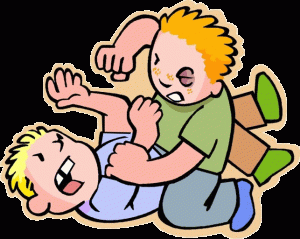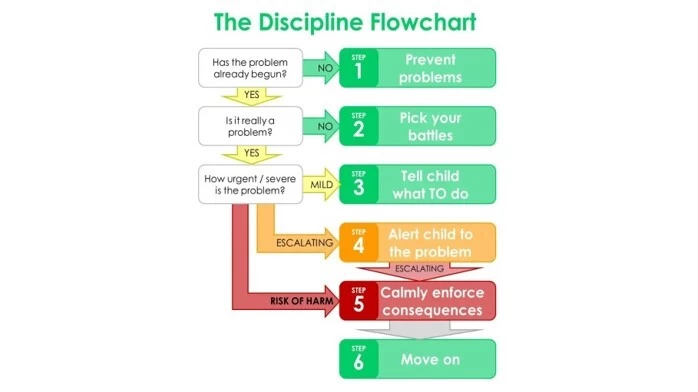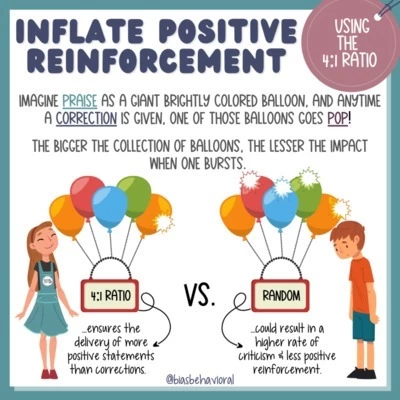PROBLEM BEHAVIOUR

WHY DO SOME KIDS STRUGGLE WITH PROBLEM BEHAVIOUR?
When children have frequent emotional outbursts, it can be a sign that they haven’t yet developed the skills they need to cope with feelings like frustration, anxiety and anger. Handling big emotions in a healthy, mature way requires a variety of skills, including:
Impulse control
Emotional self-regulation
Problem solving
Delaying gratification
Negotiating
Communicating wishes and needs to adults
Knowing what’s appropriate or expected in a given situation
Other children may seem to struggle more with boundaries and following rules. They may be defiant or ignore instructions or try to talk their way out of things that aren’t optional. You may notice patterns of behavior that seem to crop up at certain times of the day (like bedtime) during certain tasks (like during homework) or with certain people. You also might notice that your child acts out particularly when she is at home but not when she is at school, or vice versa.


STRATEGIES FOR RESPONDING IN THE MOMENT
Don’t give in. Resist the temptation to end your child’s tantrum by giving her what she wants when she explodes. Giving in teaches her that tantrums work.
Remain calm. Harsh or emotional responses tend to escalate a child’s aggression, be it verbal or physical. By staying calm, you’re also modeling for your child the type of behavior you want to see in him.
Ignore negative behavior and praise positive behavior. Ignore minor misbehavior, since even negative attention like reprimanding or telling the child to stop can reinforce her actions. Instead, provide lots of labeled praise on behaviors you want to encourage. (Don’t just say “good job,” say “good job calming down.”)
Use consistent consequences. Your child needs to know what the consequences are for negative behaviors, such as time outs, as well as rewards for positive behaviors, like time on the iPad. And you need to show him you follow through with these consequences every time.
Wait to talk until the meltdown is over. Don’t try to reason with a child who is upset. You want to encourage a child to practice negotiating when she’s not blowing up (and you’re not either).

When many people hear the word Discipline, they think of punishment – the consequences for bad behavior. Discipline is so much more: it’s Prevention of problems – setting up an environment where your child can be successful. It’s Picking Your Battles – deciding which lessons are the most important to teach. It’s Teaching your child about the right way to behave (not assuming they were born knowing.) It’s Setting Limits – letting your child know when there is a problem and giving them the opportunity to correct it. Then, as step 5, not step 1, come Consequences. After consequences, we Move On – making clear to the child that their behavior was not OK with us, but they are! Let’s look at the 6 steps in more detail.
Step 1 – Prevent Problems
There are lots of things we can do to set the stage for good behavior. It’s easier for your child to behave when they are well-rested and well-fed. It’s easier for your child to behave when you have predictable routines for your day and they know what’s expected of them. We can plan our activities so that each day the child has plenty of kid-friendly times and places where we can say yes to them – yes, it’s OK to run here, yes, it’s OK to be loud here, yes, you can touch and play with all the things here. Having this time will make the “No” times easier.
Effective discipline is grounded in relationship. If your child trusts you, and trusts that you love them, discipline will be easier.
A key step of prevention is to teach your child what to expect, and what is expected of them. It will take them a while to learn what is appropriate behavior for church, stores, the doctor’s office and so on. On your way to an activity, talk about what you will be doing, and how you would like them to behave.
Step 2 – Pick your Battles
When some questionable behavior begins, think before you intervene.
If something is clearly bad behavior, we move on quickly to the other steps… especially if there’s imminent danger of harm to a person or a possession – then we’d jump straight to step 5 – consequences. Or if your child is having a full-out tantrum, you may need to just remove them from the situation and explain later.
But sometimes the ‘misbehavior’ that we notice and react to is really not that big of deal. Sometimes the behavior is just annoying to us but not really bad. (If this is the case, can you just ignore it?) Or sometimes, our kids just surprise us by doing something we didn’t expect them to do and we react negatively before we really think about it. And then next thing we know, we’re caught in a battle of wills about something, and we realize part way through that it’s a battle not worth fighting, but we don’t want to back down because then our child learns that they can out-argue us.
When you encounter one of those moments of “I can’t believe she just did that!”, stop and think before reacting. Share your thought process with your child…. “hmm… I need to think about whether it’s OK to do that.” Once you’ve decided, explain your decision to them so you both know the rules for the future.
[Note: when I say things like “explain”, remember that you always have to act in a developmentally-appropriate way with your child. So, explaining to a toddler may be “no, no, too hot” and an explanation to a 5 year old will be a lot more specific.]
Step 3 – Tell Your Child what TO do
[If the situation is escalating quickly, we might need to jump to step 4 or step 5. But ideally, we can spend a while on step 3… ]
We need to ask for the behavior we want to see. Toddlers don’t understand the word “don’t” very well, so if you say “don’t bite”, they hear the verb, and continue to bite. Also, even if they grasp what they shouldn’t do, they may not be able to think of any alternatives for what they should do instead. Tell them what they should do.
Connect to Correct: Don’t call out suggestions from across the room. Go close to your child, establish eye contact, and then give suggestions. Engage them in the new activity before moving away.
Model: Act the way you would like your child to act. Point our other kids who are behaving well. Children are great at copying what they see. “Let’s touch the doggy gently. See, this is gentle.” “Watch how I walk carefully down the stairs, and I get to jump off just the very last stair.”
Re-direct: Tell them what other action they could do with that object. So instead of “don’t pour the rice on the floor”, say “keep the rice in the bowl.” Instead of “Don’t drop that!!” say “Hold it very carefully” and say “when you’re ready to set it down, I’ll take it from you.”
Substitute: Tell them what other object they can do that action with. “I can see you’re in the mood for throwing. Let’s go find a ball.” “I can see you want to bang on things. Where’s your drum?” Sometimes it’s delayed substitution: “I know you want to jump and run today. Later, we’ll go to the playground and you can do that all you want. For now, I need you to sit quietly.”
Offer Choices: “You have 3 cars. Bobby wants to play with one. Which one do you want to give him?”
Note: don’t offer choices to a child who is very upset. It will only make it harder for her to calm herself down. A tantrum-ing child needs to be given clear direction about what to do.
Explain the Reasons: “I want you to stop banging on that, because it might break. That would make us sad.” “I need you to be safe. When you go head first down a slide, it can hurt you. Go feet first.”
Step 4 – Alert Child to the Problem, set Limits
If re-directing has not been working, and misbehavior continues, we need to take action. [If there is imminent risk of harm, jump to step 5.]
Get serious. By this, I mean: change your tone of voice to calm but stern, change your body language. Let them know you mean business. Tell your child that his behavior is not OK. (He might not know. Or he may know and is testing the rule – and you.)
Remind your child what the expectations are and encourage her to behave better. Let her know what the consequences will be if the misbehavior continues.
Try for logical consequences, where ‘the punishment fits the crime.’ The most common consequences fall into two categories: remove the child from the situation until they can behave well, or remove options from the child (i.e. take away toys, buckle them into the high chair, stop them from using the slide.) Make sure the consequence is in proportion to the issue. Some examples: “when you throw your Duplos, I need to put them away for the day” or “when you don’t stop when I say red light, I need to carry you to keep you safe” or “I need you to help put away toys. If I put them away all by myself, I will put them up high on a shelf out of reach.”
Don’t set any consequences you’re not willing to enforce!
Step 5 – Calmly Enforce Consequences
If the misbehavior continues, you must impose the consequence. Although it’s hard to “punish” a child, it actually builds more trust if you do what you said you would do than if you “let it slide.”
Your role is to be the authority who helps your child stay safe and grow into the best adult they can be. Although you can be loving and friendly to your child at all times, you can’t always be their friend. Sometimes you’ll be the “bad guy” who blocks them from doing what they want.
No need to discuss this or re-hash it or re-negotiate it. Just do it.
Step 6 – Moving On
Once the consequence is complete (your child has calmed down enough to return to the situation or the time limit on taking the toys away has run out) then you move on.
Remind your child you still love him– his behavior was the issue. Make plans together for how to prevent or manage this sort of situation in the future.
Over time, we want our children to learn self-discipline, so as they get older, we need to “fade” back a little with our guidance. We ask them to tell us what the appropriate behavior is for a situation, we wait a little longer to correct, we let them experience some of the problems we’ve warned them about (instead of always protecting them from consequences), and take more responsibility for behaving properly.
These inventories will enable you to see the bigger picture of where the problem areas are and what might be your priorities. Click to download
